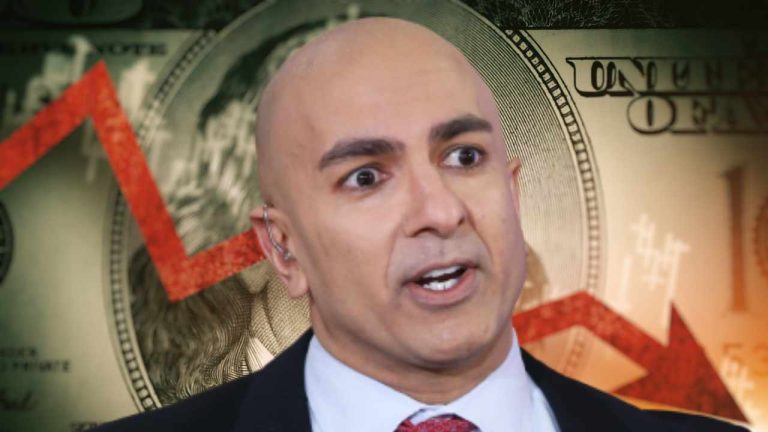Binance USD Stablecoin Under Fire as Market Cap Hits a Two-year Low
The woes seem far from over for Binance, as its Paxos-issued stablecoin market capitalization hits a two-year low. This unfortunate occurrence comes on the heels of Coinbase’s delisting of the stablecoin. However, there is more to the story as regulatory pressure mounts on Binance.
One thing we know about the cryptocurrency market is that one move from regulators could scare investors. Panic withdrawals spare no coin, not even the stablecoins, as seen in the Luna collapse a year ago. Now, Binance USD is taking a hit, and we are one step closer to panic sales.
Coinbase’s delisting of BUSD may have contributed to its market cap drop, but it is not the only factor. The US Securities and Exchange Commission may be planning to sue Paxos, the stablecoin issuer. Should you keep your BUSD investments, or is it time to sell them off?
BUSD Slips Below $10 Billion in Market Cap
Stablecoins have been the go-to hedge against the volatile cryptocurrency market. They are popular among investors, from those who indulge in online gambling to traders and holders. However, they are not as market-proof as you might think. BUSD has remained reasonably stable, with its most significant drop occurring as far back as March 2021. The stablecoin dipped to $0.9714 before quickly rallying back to its one-to-one ratio.
Note that the Paxos-issued BUSD is independent of Binance’s in-house BUSD. It falls under the Binance brand but is independently minted.
Binance USD’s dip in market capitalization began after Paxos’ announcement to stop minting new coins. The company cited pressure from the state regulator, the New York Department of Financial Services (NYDFS). Whichever is the case, the move signifies an end to Paxos’s relationship with Binance.
Since the announcement, investors have been on a redemption spree, cashing out whatever they can. This comes even as the trust company assured them that the stablecoin remains fully backed and redeemable until February 2024. Judging from previous collapses, no one seems keen on waiting to find out.
BUSD has maintained a circulating supply above $10 billion since June 2021. That makes things even more worrisome for investors. However, mounting pressure from regulators and Coinbase’s recent delisting have played vital roles in the stablecoin’s woes.
Coinbase’s Delisting
Coinbase is well-known in the cryptocurrency exchange industry. Hence, you can imagine the reception when it announced it would pause BUSD trades as of March 13. That means that all BUSD trading pairs will be suspended.
The crypto exchange titan cited Binance USD’s liquidity as the primary reason for its delisting. That comes even after Paxos’ assurance of liquidity and stability. As a result, one could infer that Coinbase’s decision is to future-proof its trading platform.
Still, BUSD liquidity deteriorated in February, with its market depth rising to danger zones. With its thin liquidity and shallow market depth, questions about its ability to trade 1:1 with the US dollar have increased. It is, therefore, not surprising that Coinbase would suspend trades.
Will Coinbase resume trading in BUSD? We can only wait to see what happens.
The Securities Exchange Commission to Sue Paxos
Even if Paxos quenches the liquidity uncertainty, it still faces a looming lawsuit from the US SEC. We have seen recent moves to clamp down on the cryptocurrency industry, especially with the occurrence of 2022. One of the biggest was the FTX collapse, an unfortunate incident fuelled by sudden, massive withdrawals.
The Securities Exchange Commission alleges that BUSD is not registered as a security. Paxos immediately announced the discontinuation of the stablecoin. Also, the SEC’s allegations follow on the heels of its recent lawsuit against Kraken.
It maintained that Kraken’s staking was in unregistered securities territory. Although Kraken did not refute or accept the claim, it shut down its US-based staking programs.
You can see the similarity between that case and the ongoing one with Paxos. Both hinge on unregulated securities, giving little chance for the stablecoin to survive.
The US SEC has declined to comment on the matter. Hence, it is still being determined whether there is an ongoing investigation. The regulator may push the charges sometime soon.
Scandals have wrecked the cryptocurrency industry, hence the tightening of regulations. Even the recent Bitcoin bull run cannot divert attention from the once-promising sector. Paxos’s case and BUSD’s possible demise are another in a long list of clampdowns that may come.
In Paxos Defense
The headlines may not favor Paxos, given the SEC’s intentions. However, if it is any consolation, the company is registered in New York. It also holds a provisional charter from the Office of the Comptroller of the Currency.
Paxos’ suspension of minting new BUSDs came with the New York District of Financial Services directive. Nonetheless, the company has pledged to support the stablecoin and manage redemption. It also assured investors of the safety of their funds.
In its own words, the BUSD remains fully backed and redeemable via its trust company until February 2024. Hence, customers can redeem their investments in US dollars. They can also convert their BUSD holdings to Pax Dollar (USDP), another stable coin from the issuer.

 1 year ago
116
1 year ago
116 

